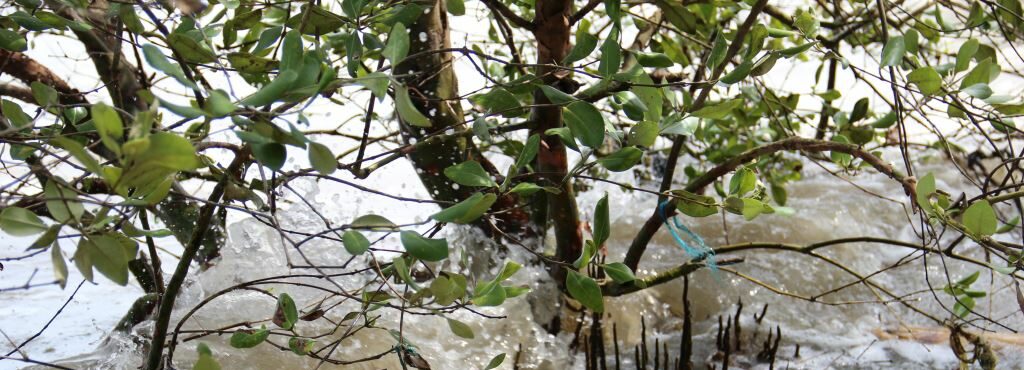
Experts draw attention to a successful method of mangrove regeneration on International Mangrove Day
-
Aquaculture, fisheries and coastal agriculture
-
Coastal resilience
-
Coastal wetland conservation
Today, on the International Day for the Conservation of the Mangrove Ecosystem, conservation organisations and mangrove specialists worldwide highlight the multifunctional multiple benefits of the practice of ‘natural regeneration’ of mangroves. Compared to planting efforts, ‘natural regeneration’ of mangroves leads to higher survival rates, and results in a more biodiverse, resilient and productive mangrove forest, enhancing community livelihoods and reducing disaster risk.
In the last decade, there has been a growing interest in the role mangroves can play in reducing tropical storm, coastal erosion and flood risk for coastal communities. Worldwide, hundreds of thousands of hectares of mangroves have been planted. Unfortunately, the majority of planting efforts fail as planted seedlings die. Even if seedlings survive, the benefits of planting mangroves for increased community resilience are questionable.
Wetlands International (in collaboration with its partners of the Building with Nature Indonesia programme), Mangrove Action Project, Mangroves for the Future and the IUCN Mangrove Specialist Group (MSG) say that a more appropriate mangrove restoration is urgently needed to enhance coastal safety, fisheries, aquaculture and carbon sequestration. The experts compiled lessons learnt in a discussion paper in which they raised attention for the ‘Ecological Mangrove Restoration approach’ (Lewis 2014). This approach focuses on creating the right biophysical and socio-economic conditions for mangroves to grow back naturally. This results in the establishment of a sizeable, diverse, functional and self-sustaining mangrove forest that benefits both nature and people
The discussion paper is available in English, Spanish, Khmer, Vietnamese, Burmese, Thai and Indonesian. Later in the year, French, Filipino and Malaysian versions will be distributed.
While planting can assist or enrich the natural regeneration process, wrong species are often planted in the wrong places. Mono-species planting can lead to non-functional mangroves, with limited benefits and low resilience. Planting in the wrong places, such as in areas that were not previously covered by mangroves, can lead to damage to other ecosystems or block sediment and water flows.
Conservation organisations and mangrove experts encourage local NGOs and funding agencies to be more cautious when implementing restoration projects and recommend involving restoration ecologists and experts in flood risk management. Understanding the restoration site with a proper risk assessment and receiving advice on the best practices at the specific site, along with local experts, is key to effective mangrove rehabilitation.
To avoid mangrove reconversion, the experts also recommend that economic activities are developed in a way that provide sustainable benefits from the restored goods and services, thereby strengthening the business case for restoration.
Available in seven languages, the leaflet ‘Mangrove Restoration: to plant or not to plant’, can be downloaded here.
For more information:
Wetlands International, Susanna Tol: [email protected], Mangrove Action Project, Jim Enright: [email protected] and Mangroves for the Future, Ann Moey: [email protected]
Contributing partners:
Indonesian Ministry of Marine Affairs and Fisheries (MMAF), Indonesian Ministry of Public Affairs and Housing (MPWH), Ecoshape, Wetlands International, Deltares, Blue Forests, Wageningen University & Research, Mangrove Action Project (MAP), Mangroves for the Future (MFF) – a regional coastal initiative co-chaired by IUCN and UNDP, the IUCN Mangrove Specialist Group (MSG), Participatory Management of Coastal Resources of Cambodia (PMCR), ACTED, Mangrove Service Network (MSN), Mangrove Ecosystem Research Center (MERC), El Programa de las Naciones Unidas para el Desarollo (PNUD), Conservación Internacional Panamá, MiAMBIENTE, Autoridad de los Recursos Acuáticos de Panamá (ARAP).
The featured image with this story is by Mark Spalding.
